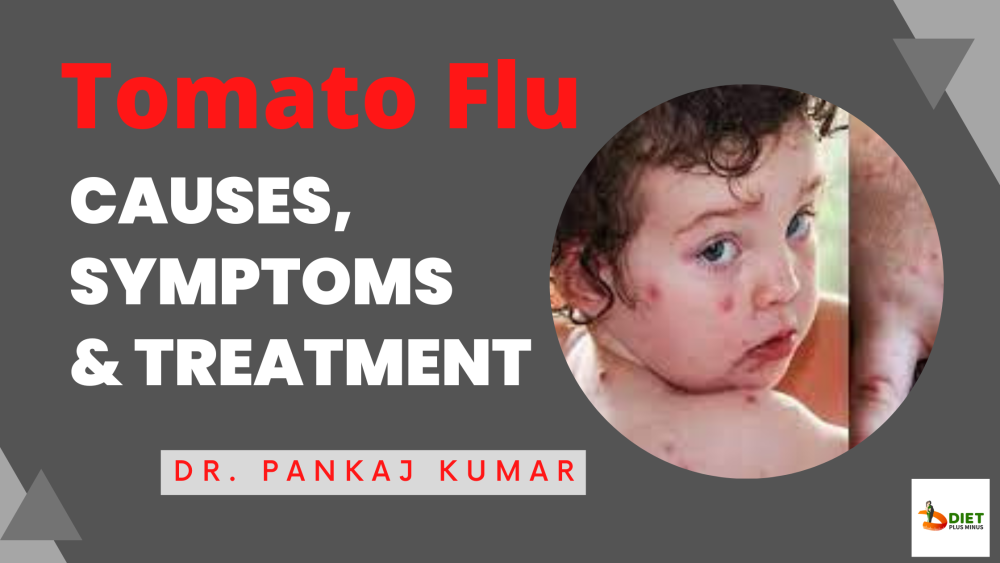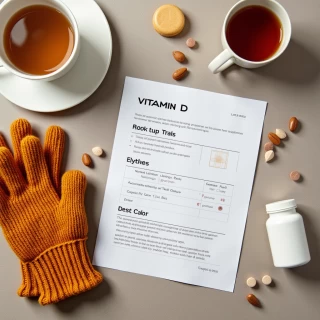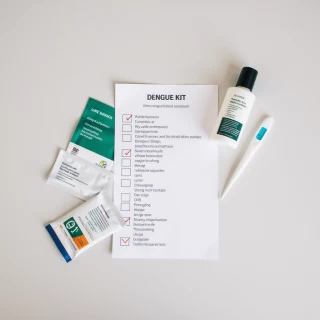
- 1st August 2022
Table of Contents
- What causes tomato flu?
- Are there signs and symptoms?
- Possible causes of tomato flu?
- Is there anything you can do if your child gets sick?
- Treatment options for tomato flu are limited.
- Tomato flu can be prevented by what?
- When should you make an appointment with a doctor or other medical professional?
- The Foods to Eat and Things to Avoid When You've Got the Flu
- Learn more about what to eat and drink when you're suffering from seasonal flu symptoms by reading on.
- Staying hydrated is essential.
- Pure fruit and vegetable juices (look for products without added sugars)
- Consumable foodstuffs
- When you're sick with the flu, try eating some of these items.
- a pot of boiling water
- Chicken Broth.
- Onion
- Taking garlic pills isn't necessary, however. It's also possible that eating raw garlic could be good.
- Yogurt is a popular dairy product.
- Fruits and vegetables that are high in vitamin C
- Vegetables with a high concentration of chlorophyll
- Oatmeal
- Spices
- What to stay away from
- Alcohol. Your immune system is compromised, and you become dehydrated as a result.
- Foods are prepared in a factory.
- The BRAT diet
- Providing your child with adequate nutrition
- Eating healthily all year long to avoid the flu
- Zinc-rich foods include oysters, red meat, and fortified breakfast cereals, for example.
Another virus has made its way into Kerala, "Tomato Flu," just as the COVID-19 situation appears to be settling down and we may be getting some respite from irritating viruses. Some parts of Kerala have recently been hit by a new virus known as tomato flu. All of the victims have been under the age of five. No one knows what caused this infection. Let's take a closer look at what the tomato flu looks like and how to avoid it. Blisters resembling tomatoes are caused by tomato flu, also known as tomato fever. Most commonly, Tomato Flu affects children under the age of five who have an untreated fever. What we know and don't know about this disease remains unclear, including its causes, symptoms, treatment, and more.
What causes tomato flu?
In children under the age of five, tomato flu is an unexplained viral disease that causes blisters/rashes on various parts of the body, skin irritation, and dehydration. When the blisters are large, they resemble tomatoes, so the name "tomato fever" or "tomato flu" was coined. Tomato fever may be caused by dengue fever or chikungunya (a viral illness), but it isn't clear which.
Are there signs and symptoms?
The following are the most common signs and symptoms:
Tomato-sized blisters in a variety of colors
2. Rashes
3. The skin is inflamed.
4. A high fever.
5. Dehydration
6. the body aches.
7. Inflammation and pain in the joints.
Additional symptoms of Tomato Flu or Tomato Fever
1. Discoloration of hands, knees, and buttocks
2. Nausea
3. Vomiting
4. Abdominal cramps
5. Coughing
6. Fatigue
7. Runny nose
8. Sneezing
Possible causes of tomato flu?
Tomato flu has unknown origins. The disease's origins remain a mystery. Tomato Flu's origins are still being investigated by health authorities. Health officials have warned that if quick action is not taken, the tomato flu could spread to other parts of India. However, the latest reports indicate that only Kollam has been affected by the virus.
Has anyone been infected with an illness caused by tomatoes?
Tomato flu is contagious, just like the rest of the flu viruses. It is imperative that infected children be isolated from the rest of the population, as this flu can spread very quickly.
Is there anything to be concerned about?
Despite the fact that it is highly contagious, health officials have stated that it is not fatal and that treatment is available. Avoiding close contact with the infected child is the best course of action. Children can also be infected by adults who handle them without showing any symptoms of the disease.
Is there anything you can do if your child gets sick?
1. See a physician right away.
2. Maintaining good hygiene is an important part of staying healthy.
3. Be sure your child doesn't itch his or her blisters.
4. Encourage your child to drink plenty of hot, boiled water to stay hydrated.
5. Bathe your child in warm water and keep the infected person at a distance.
6. Sanitize the child's clothes, utensils, and other items to prevent the flu from spreading.
Treatment options for tomato flu are limited.
Tomato flu does not have a specific treatment at this time. It follows then that this condition can only be treated on a symptomatic basis After a few days, the signs and symptoms of tomato flu go away on their own. There are no disease-specific medications available because it is a rare disease and has only recently emerged. The doctors treat the child's symptoms as they arise. Antipyretic and pain-relieving medications are prescribed by doctors to help alleviate the symptoms. The state government of Kerala began numerous initiatives to treat children in all Anganwadis and medical facilities.
Tomato flu can be prevented by what?
To reduce your risk of getting tomato flu, stay away from the infected person as much as possible. Stopping the spread of infection is the best way to combat the disease. In the event of an outbreak of an unknown disease, as we all know, the best treatment is prevention. To prevent the spread of disease, it's best if we keep our distance from one another. The following are some things to keep in mind when it comes to staying safe: Do not come into direct contact with the infected person Teach your child to recognize the warning signs and symptoms, as well as the possible negative effects. Children with fever or rash symptoms should not be hugged or touched, according to your child's age. You should teach your children about proper hygiene and discourage them from sucking on their fingers or thumbs. Use a handkerchief to contain any snot or coughing that comes out of the child's nose or mouth to keep the disease from spreading.
Avoid scratching or rubbing the blister, and wash your hands whenever you come into contact with it. Drink plenty of water, milk, or juice to keep your child hydrated; encourage them to do so however they prefer. To stop the spread of tomato fever, keep your child isolated from other children if they show symptoms. Sanitizing and separating all utensils, clothing, and other utility items on a regular basis is essential. Use warm water to clean your skin or bathe your child. To boost your immune system, eat a well-balanced diet rich in nutrients. Getting enough sleep and rest is essential for healing.
When should you make an appointment with a doctor or other medical professional?
This illness is self-healing. If you notice any of the above symptoms in your child, contact a healthcare provider immediately. Consult your doctor if you have any concerns about your child becoming infected and need to keep them isolated from the rest of the family. Tomato flu is an infectious disease that spreads quickly, but it is not lethal or life-threatening. Prevention and treatment of symptoms go hand in hand. There are a number of symptoms that should be taken care of right away, such as severe diarrhea, vomiting, and dehydration. Consequently, don't freak out if your child is infected with this contagious disease, and treat it with caution.
Is there a connection between COVID-19 and Tomato Flu?
Tomato Flu has nothing to do with COVID-19, despite some of its symptoms being similar. Symptoms like these are common in viral infections of all kinds. It's a good thing that authorities have been asked to keep an eye on things, so there's no need to panic.
The Foods to Eat and Things to Avoid When You've Got the Flu
Because of the flu, you or a loved one can find it difficult to eat. If you're suffering from the flu, it's perfectly fine to consume a bit less. Even so, you'll need to fuel up on the correct foods to keep you going as you heal.
Learn more about what to eat and drink when you're suffering from seasonal flu symptoms by reading on.
Staying hydrated is essential.
When you're sick, it's simple to become dehydrated. When you have a fever, not only do you eat and drink less, but you also lose fluids through sweat. Drinking plenty of water, on the other hand, aids in proper body function. Additionally, fluids can help alleviate congestion. Water is the most hydrating beverage on the market. In addition, it aids in the process of natural detoxification. In the event that you are not a lover of water or are searching for something with a little more taste, you can also drink: (mix equal parts with hot water)
Pure fruit and vegetable juices (look for products without added sugars)
If you're very dehydrated, you might also want to consider Pedialyte or other electrolyte-rich drinks. Pedialyte should only be used under the supervision of a medical professional. Even if vomiting and diarrhea aren't typical flu symptoms, electrolytes may still be necessary.
Consumable foodstuffs
Your body relies on food for the energy and nutrition it requires to carry out its daily activities. When you're sick with the flu, these impacts are much more critical. No matter how you slice it, the key is to eat the proper things for your health condition.
When you're sick with the flu, try eating some of these items.
a pot of boiling water
When you're sick with the flu, a good chicken, beef, or vegetable broth is a must-have in your diet. For as long as you are symptomatic, you can eat it.
Chicken Broth.
When you're feeling under the weather, it's customary to reach for a bowl of chicken soup. When you're sick, it can be palatable even if there isn't any scientific proof to support its restorative effects. Sore throats can be soothed and congestion can be alleviated by the warmth of the broth.
The health benefits of chicken soup are still present. To avoid dehydration, broth is a good supply of fluids and electrolytes. Zinc and protein are found in chicken, which is a good source of both. Additionally, you'll get vitamin A from carrots, as well as vitamin C from celery and onions, and anti-oxidants from herbs like rosemary.
Onion
Even though you might associate garlic with food, it has been used in alternative medicine for ages to treat a wide range of maladies. In adults with flu, garlic supplements improved immunity and reduced symptom severity, according to the results of a single study.
Taking garlic pills isn't necessary, however. It's also possible that eating raw garlic could be good.
Yogurt is a popular dairy product.
Probiotics can be found in yogurt. Beneficial bacteria known as probiotics have been shown to support a healthy immune system. Probiotics may help shorten the duration of the flu, according to research on mice. To get the most nutrition from your yogurt, stick to plain, unsweetened varieties.
Fruits and vegetables that are high in vitamin C
Vitamin C is an essential nutrient that can help to boost When you're sick, it's critical to bolstering your immune system. Vitamin C, for example, is better absorbed by your body when you eat foods high in it. Vitamin C-rich foods include red and green peppers, oranges and orange juice, grapefruit juice, kiwi, broccoli, and a variety of citrus fruits. However, a vitamin C supplement is an option.
Vegetables with a high concentration of chlorophyll
When you have the flu, you can help your immune system by eating spinach, kale, and other leafy greens. Vitamins A, C, E, and K are found in abundance in these foods.
Leafy greens can be added to a smoothie, or eaten raw with a drizzle of lemon and olive oil, to boost their nutritional value.
Broccoli is a powerhouse of nutrients that can help your body when you're suffering from the flu. Vitamins C and E, as well as calcium and fiber, can be found in just one serving. Broccoli can be eaten on its own or as part of a soup, but watch out for the sodium content.
Oatmeal
When you're feeling under the weather, a steaming bowl of oatmeal can be a comforting and nourishing option. Several immune-boosting nutrients can be found in oatmeal, including copper, iron, selenium, zinc, fiber, and protein.
Spices
Spices like ginger and turmeric, when consumed in moderation, can help alleviate symptoms. Containing anti-inflammatory properties, these spices are effective at clearing congestion. Tea or lemon water with them might be a good idea.
Additionally, the anti-inflammatory properties of hot peppers and horseradish can help clear sinus passages and reduce mucus.
What to stay away from
As important as knowing what to eat when you have the flu is knowing what to avoid. The following items should be avoided while you are sick with the flu:
Alcohol. Your immune system is compromised, and you become dehydrated as a result.
Caffeinated beverages. Coffee, black tea, and soda can deplete your body's water supply. In addition, it's possible that some of these drinks are sweetened.
Foods are prepared in a factory.
Even if you make your own food from scratch, the more processed it is, the fewer nutrients it contains. In order to aid your body's efforts to heal itself while suffering from the flu, eat whole, nutrient-dense foods.
The BRAT diet
Bananas, rice, apples, and toast are all included in the "BRAT" diet, which gets its name from the acronym for the foods that make up this eating regimen.
Stomach flu and other gastrointestinal illnesses accompanied by nausea, diarrhea, and vomiting were traditionally treated with the BRAT diet. Because these foods are easy to digest, they were chosen as the basis for the BRAT diet.
BRAT diet, on the other hand, is low in protein, fat, fiber, and other nutrients that may aid in recovery. And a lack of essential nutrients for an extended period of time can result in nutritional deficiencies. Consequently, the BRAT diet has been discontinued. Even so, some people who aren't feeling well eat bland foods or follow the BRAT diet. When you're feeling better, remember to add more nutrient-dense foods to your diet.
Providing your child with adequate nutrition
When you're sick with the flu and have no appetite or energy, it can be difficult to eat healthfully and stay hydrated. Even for children, this can be a challenge. Because of their smaller stature, children are more susceptible to dehydration than adults. Children are also more prone to dehydration as a result of a high temperature. Make sure your child is getting enough fluids on a regular basis. Popsicles are a great way to hydrate and soothe a sore throat.
Eating healthily all year long to avoid the flu
Boosting your immune system through a healthy diet all year round can help prevent the flu. Foods high in vitamins and antioxidants, such as those in oranges, peppers, and grapefruit, may help to boost the immune system, but no single diet is guaranteed to do so.
Zinc-rich foods include oysters, red meat, and fortified breakfast cereals, for example.
Iron is found in lean meat, white beans, and nuts; protein is found in beans, nuts, and poultry; probiotics are found in kefir, yogurt, and kimchi; and prebiotics is found in garlic, onions, and leeks. The following foods are high in selenium, iron, protein, and prebiotics.














